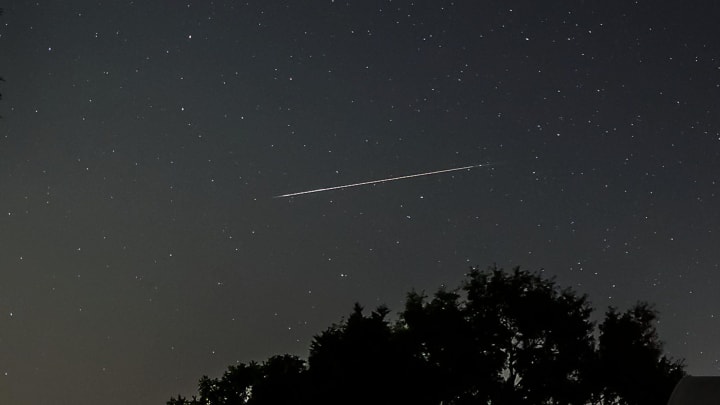Northern Hemisphere in For Perseid Meteor Show; How to Watch

The Perseid meteor shower is something that many people look forward to every summer in the Northern Hemisphere. From mid-July through the end of August, Perseids is visible.
The visibility peak of Perseids this year is going to occur this weekend. From nighttime on August 11th through the early morning sunrise of August 12th, stargazers will be in for a meteor shower show.
Dark skies will be present around midnight until dawn with the moon about 50 percent illuminated. The Perseid happens when Earth passes through debris that exists from Comet Swift-Tuttle. 1992 was the last time Comet Swift-Tuttle got close to Earth, but Perseids is annual.
This year, people can expect to see 100 meteors per hour. When there isn’t any moonlight, that number can double to 200 per hour. Referred to as “outburst years”, the last time that occurred was in 2016.
The high rate of meteors makes this one of the most popular for stargazers. As long as the weather cooperates, viewers are in for quite a show even with the moonlight.
“Not only is the shower rich in bright meteors and fireballs — No. 1 in fact — it also peaks in mid-August when the weather is still warm and comfortable,” Bill Cooke, who leads the Meteoroid Environment Office at NASA’s Marshall Space Flight Center in Alabama, said in a NASA blog post.
What is the best way to view the Perseid meteor show? Favorable conditions are expected. For the best experience, pick somewhere that has unobstructed views that have as little light pollution as possible.
Avoiding cities is a good idea, as unobstructed, dark skies are hard to come by given all of the lights and buildings. It is also recommended to allow 45 minutes for your eyes to adjust to the dark. To enhance the experience, avoid looking at your cell phone or other bright screens, such as a computer or television.
Per Space.com, “According to NASA, the Perseids' radiant is in the Perseus constellation. Though Perseus isn't the easiest to find, it conveniently follows the brighter and more distinctive constellation Cassiopeia across the night sky. The meteor shower gets its name from the constellation it radiates from, the constellation is not the source of the meteors.”
When hitting Earth’s atmosphere, a Perseid meteor is traveling at an almost incomprehensible 133,200 miles per hour, or 214,365 kilometers per hour. It is hard to believe that you can see them as they are incredibly tiny, about the size of a grain of sand.
They are also scorching hot, entering the atmosphere north of 3,000 degrees Fahrenheit, 1,650 Celsius. When they are about 60 miles (97 kilometers) away from the ground, a majority of the fragments become visible.
